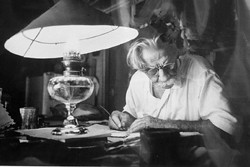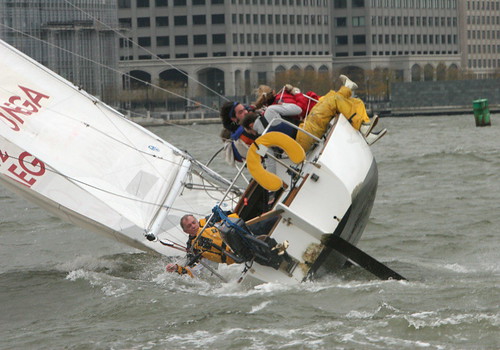 Photo by Eugene Smith Photo, Copyright 2006, Smith EstateWWGSHD? What Would Eugene Smith Have Done?
Photo by Eugene Smith Photo, Copyright 2006, Smith EstateWWGSHD? What Would Eugene Smith Have Done? Eugene Smith is the father of photojournalism as we know it. But that's another long post sometime later. Today we are talking about lighting. The photo above was taken by Smith in the Congo of Dr. Albert Schweitzer at work late at night. It's a prime example of flash and burn lighting that anybody can apply using 8 megapixel cameras with a stabilized lens, or just a tripod and flash.
 Photograph Stephenie Hollyman, Copyright 2006, All Rights Reserved
Photograph Stephenie Hollyman, Copyright 2006, All Rights Reserved I took this photo above, after asking myself WWGSHD (What Would Gene Smith Have done?). With the ghost of Eugene Smith breathing over my shoulder, I lit this photo of a family mourning the impending loss of their child, who lay deep in a coma after contracting malaria.
This was taken in April while I traveled with WHO assistance as a solo journalist through Malawi, Cambodia and Tanzania, documenting malaria for my multimedia project "Fever Zone" . To do so, I shot both video and photography, a process that can be challenging at best. After arriving, for instance in a hospital, as in these two photographs, by the time I had introduced myself, adjusted audio levels, white balance etc. on my PD150 for audio , and then shot video, there was little time left to take photographs, much less perform like a compassionate human being
The emotional content on a two-month sojurn such as this one can be overwhelming. And documenting malaria visually is tough. In the words of Dr. Jeffrey Sachs it's a "silent tsunami", hard to depict. No marasmic victims like in famines. A child or adult in a coma simply looks as if sleeping...kind of like St. Exupery's Little Prince adage that " What is essential is invisible to the human eye."
I interviewed the doctor ( actually a clinician) responsible for treatment of this family's young child. By the time I had finished I was keenly aware it was time to move on. The doctor was in deep distress because he knew that this child's death could have been prevented if he had a an artemisin compound available, which he did not.
So I took one photo using available light of the doctor with the child. It lacked the visual drama that tells the story of a needless loss of life. So after sitting to chat with the family I suddenly realized that they were my "story". But how to make it visual? I flashed to Smith's masterful photo of Albert Schweitzer burning the midnight oil in Africa. Here the father of photo reportage , performed " flash and burn" in which he combined a time exposure ( the lamp) with flash bounced off a sheet on the floor to take a dramatic story of Schweitzer at work.
Following Smith's lead, I quickly popped out a Flexi-Fill reflector and placed it on a chair to right of the family. Bouncing the flash into the reflector I bracketed up and down on exposure as I flashed images, like playing piano scales. The time exposure helped create the fill light, as I burned in the room's ambiant light. Because the room was lit by flourescents I put a green gel in the Stoffen cap on my flash and set the whitebalance for flourescent,so that the family members in the back of the photo not lit by flash didn't turn green. The reflector created a quick and easy bank light effect. After looking in the viewfinder I saw had my shot, and left the family alone to mourn in privacy.
 Photograph Stephenie Hollyman, Copyright 2006, All Rights Reserved
Photograph Stephenie Hollyman, Copyright 2006, All Rights Reserved Photo by Eugene Smith Photo, Copyright 2006, Smith Estate
Photo by Eugene Smith Photo, Copyright 2006, Smith Estate





